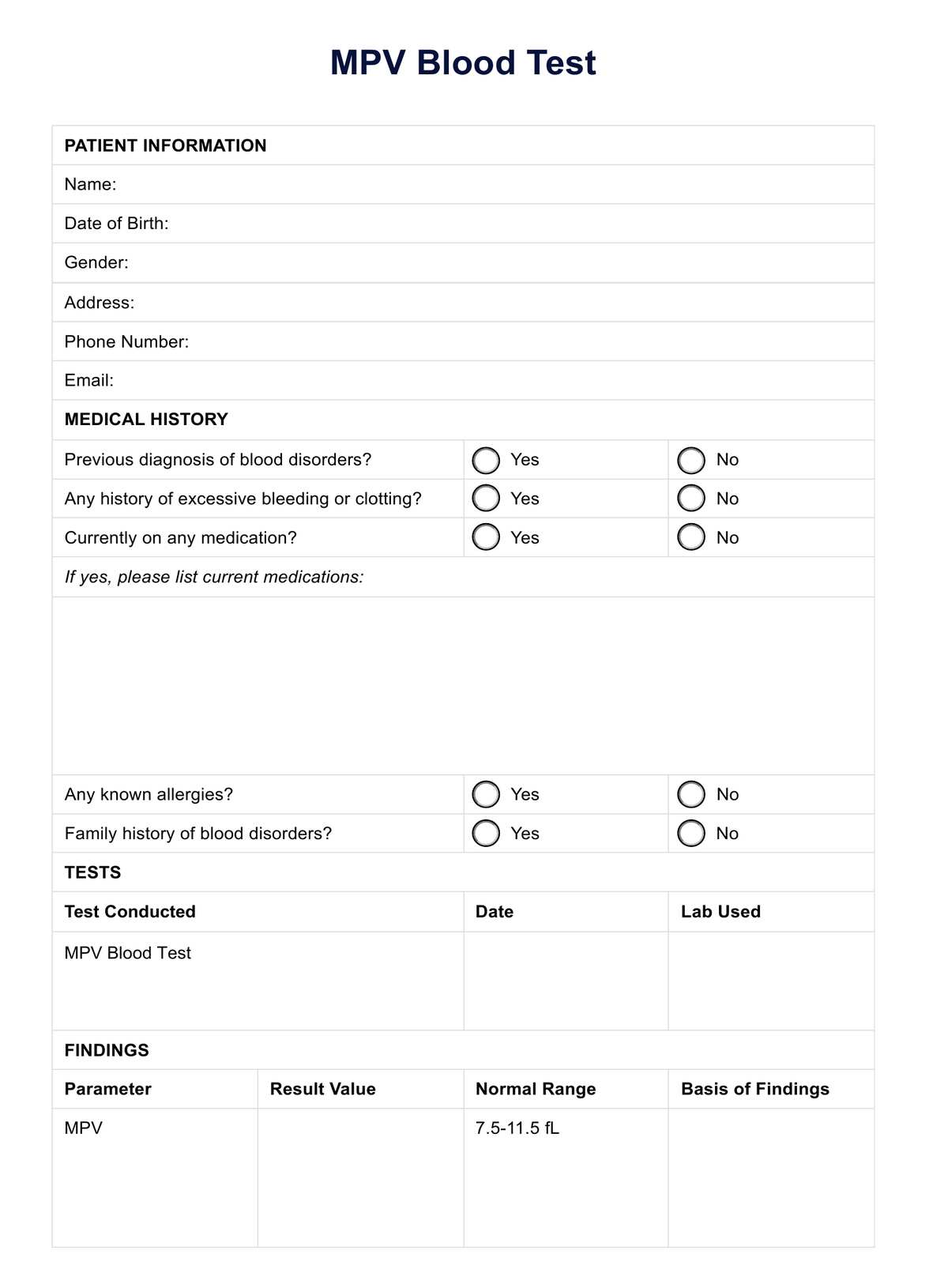Yes, Carepatron allows doctors and patients to access test results remotely through its secure online portal.

MPV Blood
Unlock efficient, precise healthcare with Carepatron's MPV Blood App. Seamless integration, remote access, and top-tier care at your fingertips. Join now!
Use Template
MPV Blood Template
Commonly asked questions
Carepatron maintains precision in records by allowing real-time updates and thorough documentation, minimizing human error.
Carepatron's comprehensive system allows for integrating various health records, ensuring a holistic view of the patient's health.
EHR and practice management software
Get started for free
*No credit card required
Free
$0/usd
Unlimited clients
Telehealth
1GB of storage
Client portal text
Automated billing and online payments











